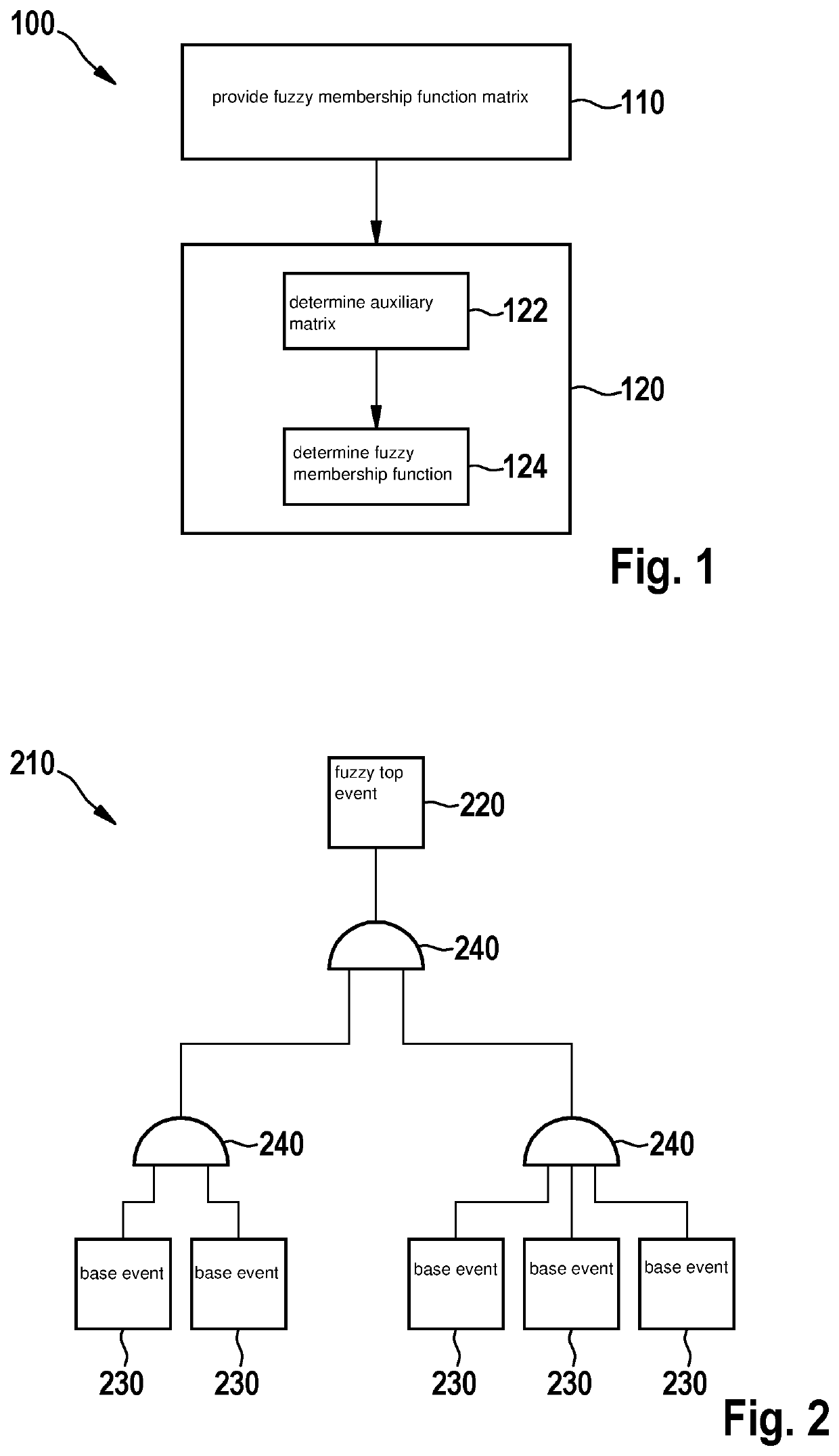Computer-implemented method for testing a technical system
- Summary
- Abstract
- Description
- Claims
- Application Information
AI Technical Summary
Benefits of technology
Problems solved by technology
Method used
Image
Examples
Embodiment Construction
[0037]FIG. 1 shows a schematic illustration of steps of a method 100 in a flowchart. Method 100 is a method for testing a technical system 200 (cf. FIG. 3), in particular software, hardware, or an embedded system, in real time.
[0038]Technical system 200 includes a plurality of in particular technical components. A schematic illustration of a fuzzy fault tree topology 210 is shown in FIG. 2.
[0039]A fuzzy top event 220 is situated at the top of fuzzy fault tree topology 210. Fuzzy top event 220 represents an undesirable event, for example the total failure of the technical system.
[0040]Fuzzy top event 220 is ascertained within the scope of a hazard analysis, for example, and predefined by so-called requirements which describe the requirements for the reliability of technical system 200.
[0041]According to FIG. 1, five base events 230 are illustrated by way of example. Linkages between base events 230 are represented by logical AND operators and / or OR operators 240.
[0042]In method 100, ...
PUM
 Login to View More
Login to View More Abstract
Description
Claims
Application Information
 Login to View More
Login to View More - R&D
- Intellectual Property
- Life Sciences
- Materials
- Tech Scout
- Unparalleled Data Quality
- Higher Quality Content
- 60% Fewer Hallucinations
Browse by: Latest US Patents, China's latest patents, Technical Efficacy Thesaurus, Application Domain, Technology Topic, Popular Technical Reports.
© 2025 PatSnap. All rights reserved.Legal|Privacy policy|Modern Slavery Act Transparency Statement|Sitemap|About US| Contact US: help@patsnap.com


